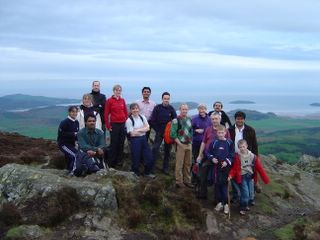The two minute tutorials this week were on non-cardiac causes of ST/T changes on the ECG(Drs Queen & Tucker), Cervical radiculopathy (Dr Szulakowski), and Irritable bowel syndrome (Dr Tuck). Dr Szulokowski wins the best talk award for this week.
Richard Asher's paper
Why are medical journals so dull? was the Friday discussion paper. Many of the problems he mentions, such as lack of colour, have now been eradicated in the 47 years since the paper was written. I am old enough, however, to remember journals being mailed rolled-up rather than flat and sympathise with his irritation at journals which spontaneously rolled up when being read. The concerns he raised about style are still voiced at times nowadays. Dr Szulakowski felt that some of the style of journal writing, and the associated 'dullness' was dictated by the required methodological descriptions, but I am not sure that I agree with him on this.
Asher believes that authors
"clog their meaning with muddy words and pompous prolixity; they spend little time in seeking the shortest, neatest, and plainest way of putting down their meaning". I recognise this, though admittedly it is as nothing compared with some sociology texts I have read. This is not to say that the authors of scientific papers are lazy wasters; they have often put in gargantuan effort in organising and conducting their research and they then provide papers in the style the journals expect. Unfortunately the 'pompous prolixity' can be seen in speech, such as when a resident tells me that he cannot 'visualise the fundus'. My response, "your imagination must be rather poor" is usually met with incomprehension until I suggest that he did not "see" the fundus. Let's keep it plain and simple.
In order to support my argument against Dr Szulokowski I need to find examples of papers which despite their complex nature can escape dullness. Off the top of my head I wondered about
Molecular structure of Nucleic Acids, Watson J D & Crick FHC. Nature 171, 737-738 (1953) . When did you last read a scientific paper with such modesty? Any other suggestions?
The reading for discussion on Friday 26th is the description of the plague of Athens in
The History of the Peloponnesian War written by Thucydides in 431 B.C.
If you click on the link it will take you to a copy of the piece. The web page begins with chapter VI, but you can skip down to chapter VII (unless you would like to read about the war). If you cannot find the right section, press ctrl-F and type in plague.
You need to have an opinion on the diagnosis and be prepared to argue your corner. Make sure you revise the signs and symptoms of the disease you choose. Your two minute tutorials could be on some aspect of your chosen disease. I will post the discussion the following week and award a prize to the best argument/diagnosis.
This week's reading is
The Rational Clinical Examination. Does this patient have abnormal central venous pressure? Cook DJ, Simel DL. JAMA 1996 Feb 28;275(8):630-4. Many articles from this series are available free online, but not this one. See if you can retrieve a copy from the
NHSES elibrary. A copy will be in the homework folder on the ward...for the technologically challenged among you....but only if I am asked to place it there.
It was suggested during the round that treatment with hydroxocobalamin could worsen the prognosis in malignant disease...I have thrown down my don't-believe-it-gauntlet on this one. Dr Szulokowski is challenged to provide supporting evidence next week. Dr Tuck will tell us the indications for statins in acute stroke next week.
Interesting cases:
1. Behcet's refractory to steroids, azathioprine, colchicine, methotrexate and infliximab.
2. Microcytic anaemia with very low B12.
3. Stapylococcal bursitis and hypogammaglobulinaemia.
4. Neutropenia and recurrent C.
difficileDon't forget your two minute tutorial....make it concise and precise. Don't pick too large a subject.
Why not leave a comment...click on the comment button.




